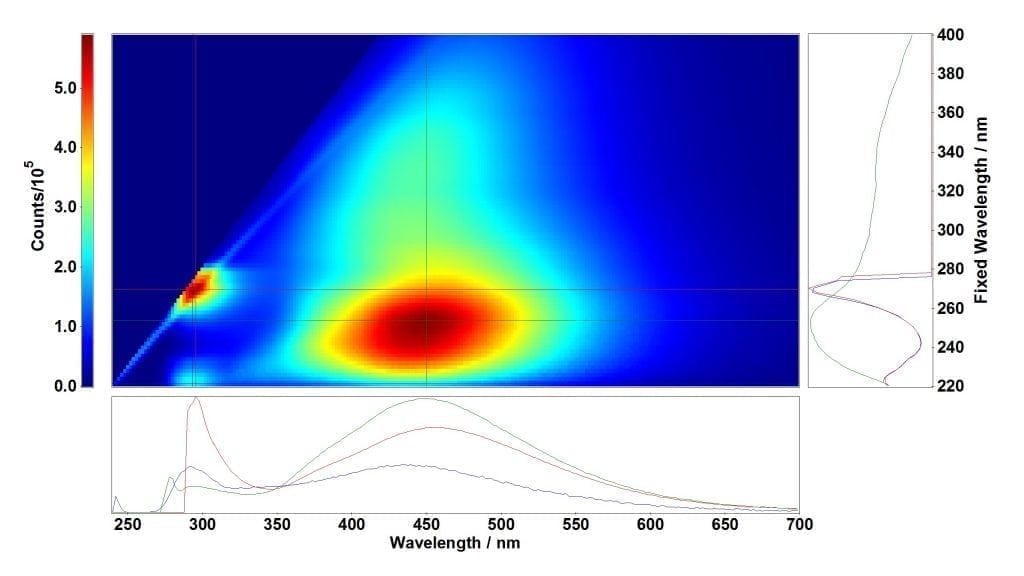Water Quality by Monitoring the Natural Organic Matter of Acquatic Systems
Water in aquatic environments may consist of a complex mixture of organic compounds. This involves a continuum of natural organic matter of variable size, particulate or colloidal nature. The Natural Organic Matter (NOM) has been widely used to characterise water. Its measurement involves the Total Organic Content (TOC), the sum of particulate and Dissolved Organic Carbon (DOC), also known as humic substances or refractory organic substances.
Humic substances in aquatic systems originate from degradation of plant and animal tissue with a precursor being lignin which fluoresces at 360 nm upon excitation between 240 nm and 320 nm. Processes operative during the degradation are complex, with poly-condensation and formation of polyphenols being a possible candidate. The fluorescence can be related to substituted benzoic moieties with the start material being coniferyl alcohol, a basic unit of lignin. Model compounds and component analysis also associated this fluorescence to coniferyl alcohol, stilbene and phenyl-coumarone structures. On the other hand, protein fluorescence centres, especially observed in marine and pond water, are at the same wavelengths as those of tryptophan and tyrosine; although it is not known how these fluorescence centres relate to the structure of DOC. Fluorescence centres ascribed to humic-like and fulvic-like material occur at higher emission wavelengths.
The complexity of the absorption and emission spectra makes it impossible to clearly assign individual peaks occurring from independent chromophores. Different techniques are used to characterise NOM. A variety of analytical techniques such as fluorescence spectroscopy, Fourier Transform Infrared Spectroscopy, nuclear magnetic resonance, high pressure size exclusion chromatography, mass spectrometry have been widely employed, and even a combination of the techniques is used, especially when water components need to be quantified. In this application note, we present measurements of water obtained from river aquatic systems and show how fluorescence spectroscopy can easily provide initial results on the organic fingerprint of water.
Figure 1: Excitation-emission map of downstream river water.
Download the Full Natural Organic Matter Application Note
Water Quality by Monitoring the Natural Organic Matter of Acquatic Systems
FS5 Spectrofluorometer
For further information on the FS5 Spectrofluorometer, why not contact one of our sales team today at: sales@edinst.com.
Sign up for our Application and Technical Notes
If you have enjoyed reading our Application Note, why note sign-up to our infrequent newsletter via our red Sign-up button below.









